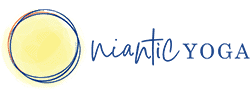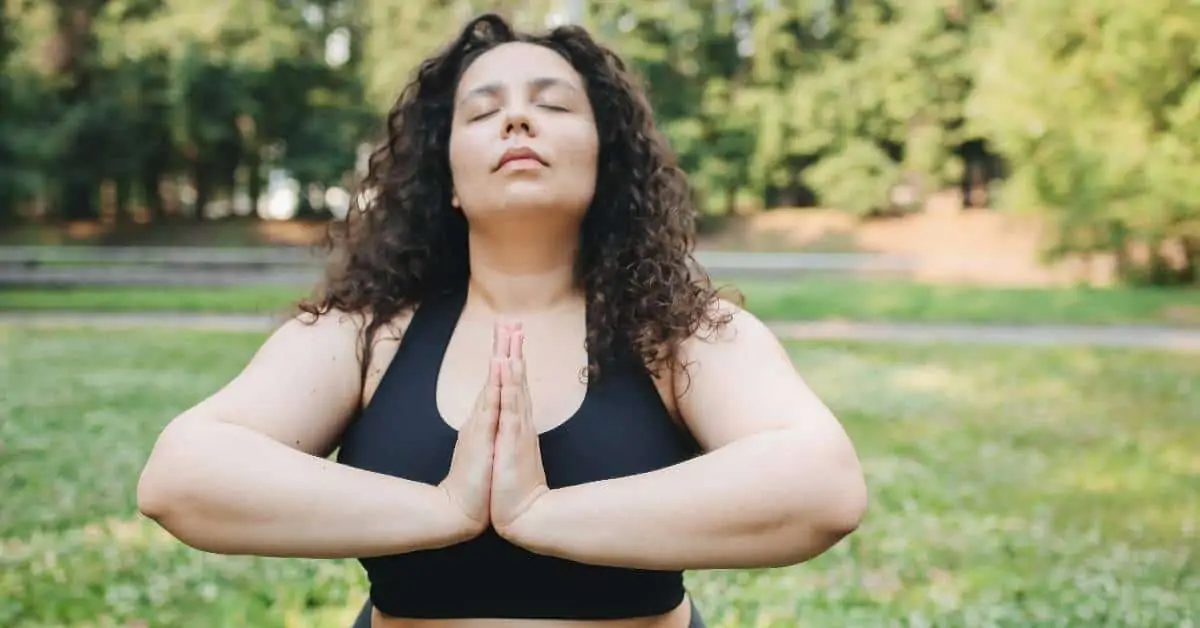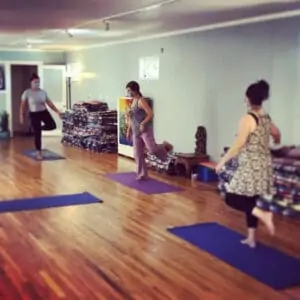So, how’s your breathing been? Have you noticed it become easier or more stressed over the past few months? Stressful times too frequently create a stressful body and mind, which in turn creates stressful breathing. And even if you feel your breathing is easy, maybe, just maybe, it can be even easier.
In case you missed them, I posted 2 other entries on our blog about Easy Breathing. The 1st was The Double Exhale, an easy and quick way to use your breath to calm down any time you’re nervous, fearful or anxious. The 2nd was Part 1 of 2, which had you look and feel more closely your normal breathing patterns, and perhaps helped you soften even more into a fuller breath. Because a bigger breath is not necessarily a fuller or deeper breath.
A bigger breath may not be a fuller or deeper breath? What does that mean? Well, if you’re like almost everyone else, you’ve learned to “take a big breath” after you’ve exerted yourself in some way. You just finished running, or moving a big rock in your garden, and even after or during a heated argument. You have probably even been in an exercise class, or a yoga class, where you’ve been instructed to, “take a big, deep breath in, and let it out with a big sigh,” or something similar. The reality: an increase in air volume does NOT equate to an increase in oxygen in your system.
If that’s true (and it is), why does everybody do it? Do I really need more oxygen? And if so, how should I breathe to get more oxygen when needed? Well, just as we often teach in our yoga classes, where less is more, when it comes to breathing and health, less is much, much more.
Your lifestyle often creates the habit of breathing much too much through your mouth. This is an inefficient and unhealthy habit. It disrupts the O2—CO2 relationship in your body, which then creates a cascade of physiological imbalances, from poor digestion and chronic pain, to allergies and heart disorders, to anxiety and depression. The proper relationship is critical to optimal health and maintaining your vitality.
The habit comes in from a variety of life situations. If you talk a lot (think teachers, actors, vocalists, your gabby neighbor), if you were raised in a family that breathed mostly with their mouth, if you smoked or smoke now, if you have poor posture (as a result of traumatic emotional states, getting older, sitting in furniture that is too soft or too bucketed, jobs/hobbies that require excessive manual labor, sports and working out), all will contribute to mouth breathing and it’s deleterious effects.
So what to do? Breathe through your nose. Always. Breathe softer, slower, smaller and more steadily. And allow the whole of your torso to participate in breathing. Allow your whole body to attend to your breath and breathe with you, for you. Right down to the cellular level.
You began this process in Easy Breathing (Pt 1). You may want to refresh your experience of this before you continue on with The Three Sounds.
An Introduction To Your Diaphragms Of Breathing
You will place your hands on different areas of your body, and use different sounds in order to identify and increase the efficiency of your 3 breathing diaphragms. Three? Yes.
You may not know that along with your thoracic diaphragm, the one almost everyone is aware of, there are two others that move with each and every breath you take. You’ll start with the one you know. Your thoracic diaphragm divides your upper torso and ribs from your lower torso and the organs in your belly. It attaches to your lowest ribs in the front, moves around and down a bit on your ribcage, as it wraps all the way around your side and back ribs. This means you have just a little over 50% of lung area in the back and sides of your torso compared to the front. Next you will find the pelvic diaphragm and then the one in your neck.
The diaphragms all move the same way. On the Inhale, they widen and move down a little bit. On the Exhale, they soften and rest back (or up) into their relaxed position. You will use 3 different sounds to help you feel where they are as you explore your body and the deeper tissues respond, move and relax, providing you with the opportunity to breathe more fully, without taking a big, deep breath.
The 3 Sounds
Start by resting in Shavasana, or in a comfortable seated position. Take the time to relax in Easy Breathing and allow all the tissues of your ribs and lungs, your torso, front, back and sides so soften and move with each breath. Once you are settled in to a comfortable state and relaxed breath you will move on to the next stage.
“SHHH”
- Place your hands on your upper belly, at the bottom of your rib cage. After a relaxed breath or two, make the “SH” sound, as if you were in a library or movie indicating someone to stop talking.
- At the end of your Exhale, breathe in through your nose and repeat the “SH” sound. What do you feel with your hand? Under your hands in the diaphragm?
- Do you feel the organs in your belly moving? Your diaphragm opens and pulls down as you Inhale, pushing your internal organs just a little bit down and forward, and then they rest back as you Exhale.
- Repeat a few times, then return to Easy Breathing, through your nose, and explore. Subtle and deep tissues are softening, responding, moving, activating and relaxing with each and every breath. What do you notice?
“SSSS”
- Place your hands on your low belly now, close to your pubic bone and hip creases. After a few normal breaths, make the “S” sound. “S” as in slinky, sassy, sound.
- As before, Inhale through your nose and repeat the “S” sound, as you Exhale, a few more times.
- What are you aware of now? This diaphragm, the pelvic floor, moves with and in the same manner as your thoracic diaphragm.
- As your diaphragm opens and moves down, with your Inhalation, it creates more room in your pelvis to allow the movement of your internal organs to descend a bit, as well as move forward. And then your Exhalation allows everything to move, to rest, up and back.
- After a few repetitions, return to Easy Breathing, and let your awareness wander and wonder.
- Try placing your hands on the sides of your hips now. Can you feel your tissues moving here? And your hips and sacrum on the floor. What awareness can you access now with each breath?
- Move your hands back up to your Thoracic Diaphragm. Then place them on your side ribs any way that’s comfortable for you. Notice how your ribs spread with every in-breath. And what do you notice now in the back of your body? The tissues and bones of your ribs and spine move up and down, and in and out. Do you now have any new awareness or experience as you notice your diaphragms working together. Always in sync. With each and every breath.
“HAAA”
- “HAAA”: Now move your hands up to your throat and collarbones. You may find it more comfortable to cross your hands so your Right hand is on the Left collarbone, upper ribs and shoulder, and against the side of your neck. The Left hand would then cross over to the Right. It’s also helpful to know that your lungs go all the way up to the top of your shoulders and out into your armpits.
- After a few relaxed breaths, make the “HAAA” sound. It’s the loud version of the Ujjayi sound. It’s the sound you make when you breathe on a mirror or glass to fog it up.
- The diaphragm here also opens a little and moves down a little, on your Inhale. Your collarbones and shoulders widen more than they lift. The lift is minimal. The widening is the natural movement. And then they rest back in on your Exhale.
- Repeat a few times, then return to Easy Breathing. What are you aware of now? Do you feel your uppermost ribs moving under your hands? Do you feel the widening of your shoulder girdle? Are your tongue and throat
soft? What do you notice now? - Bring your attention to the side of your shoulders and your armpits. You can always touch these areas if that helps you. I like to imagine nostrils on the outside of my shoulders that are breathing for me here. And what about your upper back and shoulder blades? How do they move and respond as you become more and more aware of your breath and how much it entails? And do you notice all 3 diaphragms, your whole torso breathing with each and every breath?
As you move about your day, notice how your breathing is now, as well as your mood, your responsiveness, your overall attentiveness. Practice Parts 1 and 2 of Easy Breathing for several days in a row, if you can, or several times a week, for 10 minutes or so. I think you’ll see big changes in your body, your mind…. And even more. You’ll be doing more than Breathing Easily, you’ll be Living Easily.
Namaste, Kris






